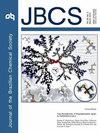Mechanism and Kinetics of The Degradation of Nitazoxanide and Hydroxychloroquine Drugs by Hydroxyl Radicals: Theoretical Approach to Ecotoxicity
IF 1.3
4区 化学
Q3 CHEMISTRY, MULTIDISCIPLINARY
引用次数: 0
Abstract
The efforts of contrasting the effects caused by the Covid-19 (coronavirus disease 2019) pandemic increased the disposal of active pharmaceutical ingredients. This paper reports the mechanisms and kinetics of the degradation in aqueous environments induced by OH of two drugs, among those most widely probed at the outbreak of coronavirus, nitazoxanide and hydroxychloroquine. The investigation exploits quantum chemistry techniques and a reaction rate theory combined with diffusion-controlled processes and quantum mechanical tunneling. The reaction rate constants are obtained in an environmentally relevant temperature range. The results show that (i) the deacetylation of nitazoxanide with formation of tizoxanide is kinetically the most favorable channel, in agreement with experimental work; (ii) for hydroxychloroquine, the present theoretical calculations show that the most favorable channel is the addition of OH at the aromatic ring. The half-life time degradation products are for both cases in the range between 12 to 138 days. Both drugs presented toxicities between harmful and toxic as obtained by computational toxicology calculations: The toxicity is also calculated for the degradation products: (i) in the nitazoxanide degradation process, tizoxanide was characterized as more toxic, while (ii) in the case of hydroxychloroquine, the major degradation product showed a decrease in the toxicity.羟基自由基降解硝唑嗪和羟氯喹药物的机理和动力学:生态毒性的理论探讨
对比Covid-19(2019冠状病毒病)大流行造成的影响的努力增加了活性药物成分的处置。本文报道了两种药物在水环境中降解的机理和动力学,其中在冠状病毒爆发中被广泛探索的是硝唑尼特和羟氯喹。该研究利用了量子化学技术和反应速率理论,结合了扩散控制过程和量子力学隧道。在与环境相关的温度范围内得到反应速率常数。结果表明:(1)硝唑尼德的脱乙酰生成替唑尼德在动力学上是最有利的反应通道,与实验结果一致;(ii)对羟基氯喹,目前的理论计算表明,最有利的通道是在芳环上加成氢化反应。两种情况下降解产物的半衰期在12 ~ 138天之间。通过计算毒理学计算,两种药物的毒性均介于有害和毒性之间,对降解产物的毒性也进行了计算:(1)在硝唑昔尼特降解过程中,硝唑昔尼特的毒性更大,而(2)羟氯喹的主要降解产物毒性下降。
本文章由计算机程序翻译,如有差异,请以英文原文为准。
求助全文
约1分钟内获得全文
求助全文
来源期刊
CiteScore
2.90
自引率
7.10%
发文量
99
审稿时长
3.4 months
期刊介绍:
The Journal of the Brazilian Chemical Society embraces all aspects of chemistry except education, philosophy and history of chemistry. It is a medium for reporting selected original and significant contributions to new chemical knowledge.

 求助内容:
求助内容: 应助结果提醒方式:
应助结果提醒方式:


